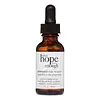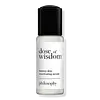What's inside
What's inside
 Key Ingredients
Key Ingredients

 Benefits
Benefits

 Concerns
Concerns

 Ingredients Side-by-side
Ingredients Side-by-side

Water
Skin ConditioningPentylene Glycol
Skin ConditioningGlycerin
HumectantPalmitoyl Tetrapeptide-7
Skin ConditioningPalmitoyl Oligopeptide
CleansingGlutathione
Allantoin
Skin ConditioningAloe Barbadensis Leaf Juice
Skin Conditioning1,2-Hexanediol
Skin ConditioningPotassium Ascorbyl Tocopheryl Phosphate
AntioxidantHydrolyzed Soy Protein
HumectantCarbomer
Emulsion StabilisingButylene Glycol
HumectantPEG-7 Glyceryl Cocoate
EmulsifyingParfum
MaskingSodium Hyaluronate
HumectantSodium Hydroxide
BufferingCaprylyl Glycol
EmollientPolysorbate 20
EmulsifyingGlyceryl Polyacrylate
Limonene
PerfumingMaltodextrin
AbsorbentPotassium Sorbate
PreservativeEthylhexylglycerin
Skin ConditioningDisodium EDTA
Chlorphenesin
AntimicrobialBHT
AntioxidantPhenoxyethanol
PreservativeWater, Pentylene Glycol, Glycerin, Palmitoyl Tetrapeptide-7, Palmitoyl Oligopeptide, Glutathione, Allantoin, Aloe Barbadensis Leaf Juice, 1,2-Hexanediol, Potassium Ascorbyl Tocopheryl Phosphate, Hydrolyzed Soy Protein, Carbomer, Butylene Glycol, PEG-7 Glyceryl Cocoate, Parfum, Sodium Hyaluronate, Sodium Hydroxide, Caprylyl Glycol, Polysorbate 20, Glyceryl Polyacrylate, Limonene, Maltodextrin, Potassium Sorbate, Ethylhexylglycerin, Disodium EDTA, Chlorphenesin, BHT, Phenoxyethanol
Water
Skin ConditioningGlycerin
HumectantPentaerythrityl Tetraethylhexanoate
EmollientPropanediol
SolventAlcohol Denat.
AntimicrobialXanthan Gum
Emulsifying3-O-Ethyl Ascorbic Acid
Skin ConditioningHydroxyacetophenone
AntioxidantCaprylic/Capric Triglyceride
MaskingHydroxyethyl Acrylate/Sodium Acryloyldimethyl Taurate Copolymer
Emulsion StabilisingMaltodextrin
AbsorbentSqualane
Emollient1,2-Hexanediol
Skin ConditioningCaprylyl Glycol
EmollientMethylpropanediol
SolventSodium Citrate
BufferingCitric Acid
BufferingParfum
MaskingPlantago Lanceolata Leaf Extract
AntimicrobialCarbomer
Emulsion StabilisingLactobacillus
Skin ConditioningSodium PCA
HumectantSodium Hydroxide
BufferingPolysorbate 60
EmulsifyingAdenosine
Skin ConditioningPEG-8
HumectantMica
Cosmetic ColorantSorbitan Isostearate
EmulsifyingTocopherol
AntioxidantBiosaccharide Gum-1
HumectantPentylene Glycol
Skin ConditioningLimonene
PerfumingSilica
AbrasiveDimethylmethoxy Chromanol
AntioxidantEthylhexylglycerin
Skin ConditioningHordeum Vulgare Extract
EmollientHyaluronic Acid
HumectantGanoderma Lucidum Stem Extract
Skin ConditioningSilanetriol
Ascorbyl Palmitate
AntioxidantAgave Americana Leaf Extract
Skin ConditioningCitral
PerfumingRosmarinus Officinalis Leaf Extract
AntimicrobialAscorbic Acid
AntioxidantSodium Benzoate
MaskingPotassium Sorbate
PreservativeTitanium Dioxide
Cosmetic ColorantWater, Glycerin, Pentaerythrityl Tetraethylhexanoate, Propanediol, Alcohol Denat., Xanthan Gum, 3-O-Ethyl Ascorbic Acid, Hydroxyacetophenone, Caprylic/Capric Triglyceride, Hydroxyethyl Acrylate/Sodium Acryloyldimethyl Taurate Copolymer, Maltodextrin, Squalane, 1,2-Hexanediol, Caprylyl Glycol, Methylpropanediol, Sodium Citrate, Citric Acid, Parfum, Plantago Lanceolata Leaf Extract, Carbomer, Lactobacillus, Sodium PCA, Sodium Hydroxide, Polysorbate 60, Adenosine, PEG-8, Mica, Sorbitan Isostearate, Tocopherol, Biosaccharide Gum-1, Pentylene Glycol, Limonene, Silica, Dimethylmethoxy Chromanol, Ethylhexylglycerin, Hordeum Vulgare Extract, Hyaluronic Acid, Ganoderma Lucidum Stem Extract, Silanetriol, Ascorbyl Palmitate, Agave Americana Leaf Extract, Citral, Rosmarinus Officinalis Leaf Extract, Ascorbic Acid, Sodium Benzoate, Potassium Sorbate, Titanium Dioxide
Ingredients Explained
These ingredients are found in both products.
Ingredients higher up in an ingredient list are typically present in a larger amount.
1,2-Hexanediol is a synthetic liquid and another multi-functional powerhouse.
It is a:
- Humectant, drawing moisture into the skin
- Emollient, helping to soften skin
- Solvent, dispersing and stabilizing formulas
- Preservative booster, enhancing the antimicrobial activity of other preservatives
Caprylyl Glycol is a humectant and emollient, meaning it attracts and preserves moisture.
It is a common ingredient in many products, especially those designed to hydrate skin. The primary benefits are retaining moisture, skin softening, and promoting a healthy skin barrier.
Though Caprylyl Glycol is an alcohol derived from fatty acids, it is not the kind that can dry out skin.
This ingredient is also used as a preservative to extend the life of products. It has slight antimicrobial properties.
Learn more about Caprylyl GlycolCarbomer is a polymer of acrylic acid. Its main role is to create a gel consistency.
A high amount of carbomer can cause pilling or balling up of products. Don't worry, most products contain 1% or less of carbomer.
Ethylhexylglycerin (we can't pronounce this either) is commonly used as a preservative and skin softener. It is derived from glyceryl.
You might see Ethylhexylglycerin often paired with other preservatives such as phenoxyethanol. Ethylhexylglycerin has been found to increase the effectiveness of these other preservatives.
Glycerin is already naturally found in your skin. It helps moisturize and protect your skin.
A study from 2016 found glycerin to be more effective as a humectant than AHAs and hyaluronic acid.
As a humectant, it helps the skin stay hydrated by pulling moisture to your skin. The low molecular weight of glycerin allows it to pull moisture into the deeper layers of your skin.
Hydrated skin improves your skin barrier; Your skin barrier helps protect against irritants and bacteria.
Glycerin has also been found to have antimicrobial and antiviral properties. Due to these properties, glycerin is often used in wound and burn treatments.
In cosmetics, glycerin is usually derived from plants such as soybean or palm. However, it can also be sourced from animals, such as tallow or animal fat.
This ingredient is organic, colorless, odorless, and non-toxic.
Glycerin is the name for this ingredient in American English. British English uses Glycerol/Glycerine.
Learn more about GlycerinLimonene is a fragrance that adds scent and taste to a formulation.
It's found in the peel oil of citrus fruits and other plants such as lavender and eucalyptus. The scent of limonene is generally described as "sweet citrus".
Limonene acts as an antioxidant, meaning it helps neutralize free radicals.
When exposed to air, oxidized limonene may sensitize the skin. Because of this, limonene is often avoided by people with sensitive skin.
The term 'fragrance' is not regulated in many countries. In many cases, it is up to the brand to define this term. For instance, many brands choose to label themselves as "fragrance-free" because they are not using synthetic fragrances. However, their products may still contain ingredients such as essential oils that are considered a fragrance.
Learn more about LimoneneMaltodextrin is a polysaccharide. It is derived from starch such as rice, corn, wheat, or potato starch.
In food, Maltodextrin is used to improve the texture and thicken a product. Due to its structure, it can help create a gel texture. As an emulsion stabilizer, it helps keep the ingredients in a product together.
As a polysaccharide, Maltodextrin has moisturizing properties. Polysaccharides are a type of carbohydrate. The top layer of skin uses polysaccharides to retain water, keeping the skin hydrated.
Maltodextrin is water soluble and has a sweet taste.
Learn more about MaltodextrinParfum is a catch-all term for an ingredient or more that is used to give a scent to products.
Also called "fragrance", this ingredient can be a blend of hundreds of chemicals or plant oils. This means every product with "fragrance" or "parfum" in the ingredients list is a different mixture.
For instance, Habanolide is a proprietary trade name for a specific aroma chemical. When used as a fragrance ingredient in cosmetics, most aroma chemicals fall under the broad labeling category of “FRAGRANCE” or “PARFUM” according to EU and US regulations.
The term 'parfum' or 'fragrance' is not regulated in many countries. In many cases, it is up to the brand to define this term.
For instance, many brands choose to label themselves as "fragrance-free" because they are not using synthetic fragrances. However, their products may still contain ingredients such as essential oils that are considered a fragrance by INCI standards.
One example is Calendula flower extract. Calendula is an essential oil that still imparts a scent or 'fragrance'.
Depending on the blend, the ingredients in the mixture can cause allergies and sensitivities on the skin. Some ingredients that are known EU allergens include linalool and citronellol.
Parfum can also be used to mask or cover an unpleasant scent.
The bottom line is: not all fragrances/parfum/ingredients are created equally. If you are worried about fragrances, we recommend taking a closer look at an ingredient. And of course, we always recommend speaking with a professional.
Learn more about ParfumPentylene glycol is typically used within a product to thicken it. It also adds a smooth, soft, and moisturizing feel to the product. It is naturally found in plants such as sugar beets.
The hydrophilic trait of Pentylene Glycol makes it a humectant. As a humectant, Pentylene Glycol helps draw moisture from the air to your skin. This can help keep your skin hydrated.
This property also makes Pentylene Glycol a great texture enhancer. It can also help thicken or stabilize a product.
Pentylene Glycol also acts as a mild preservative and helps to keep a product microbe-free.
Some people may experience mild eye and skin irritation from Pentylene Glycol. We always recommend speaking with a professional about using this ingredient in your routine.
Pentylene Glycol has a low molecular weight and is part of the 1,2-glycol family.
Learn more about Pentylene GlycolPotassium Sorbate is a preservative used to prevent yeast and mold in products. It is commonly found in both cosmetic and food products.
This ingredient comes from potassium salt derived from sorbic acid. Sorbic acid is a natural antibiotic and effective against fungus.
Both potassium sorbate and sorbic acid can be found in baked goods, cheeses, dried meats, dried fruit, ice cream, pickles, wine, yogurt, and more.
You'll often find this ingredient used with other preservatives.
Learn more about Potassium SorbateSodium Hydroxide is also known as lye or caustic soda. It is used to adjust the pH of products; many ingredients require a specific pH to be effective.
In small amounts, sodium hydroxide is considered safe to use. However, large amounts may cause chemical burns due to its high alkaline.
Your skin has a natural pH and acid mantle. This acid mantle helps prevent harmful bacteria from breaking through. The acid mantle also helps keep your skin hydrated.
"Alkaline" refers to a high pH level. A low pH level would be considered acidic.
Learn more about Sodium HydroxideWater. It's the most common cosmetic ingredient of all. You'll usually see it at the top of ingredient lists, meaning that it makes up the largest part of the product.
So why is it so popular? Water most often acts as a solvent - this means that it helps dissolve other ingredients into the formulation.
You'll also recognize water as that liquid we all need to stay alive. If you see this, drink a glass of water. Stay hydrated!
Learn more about Water